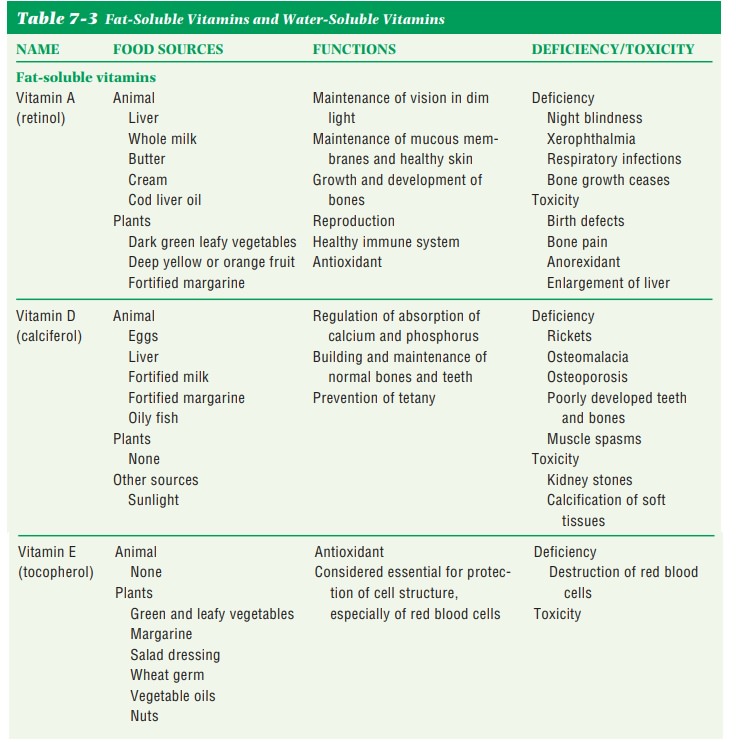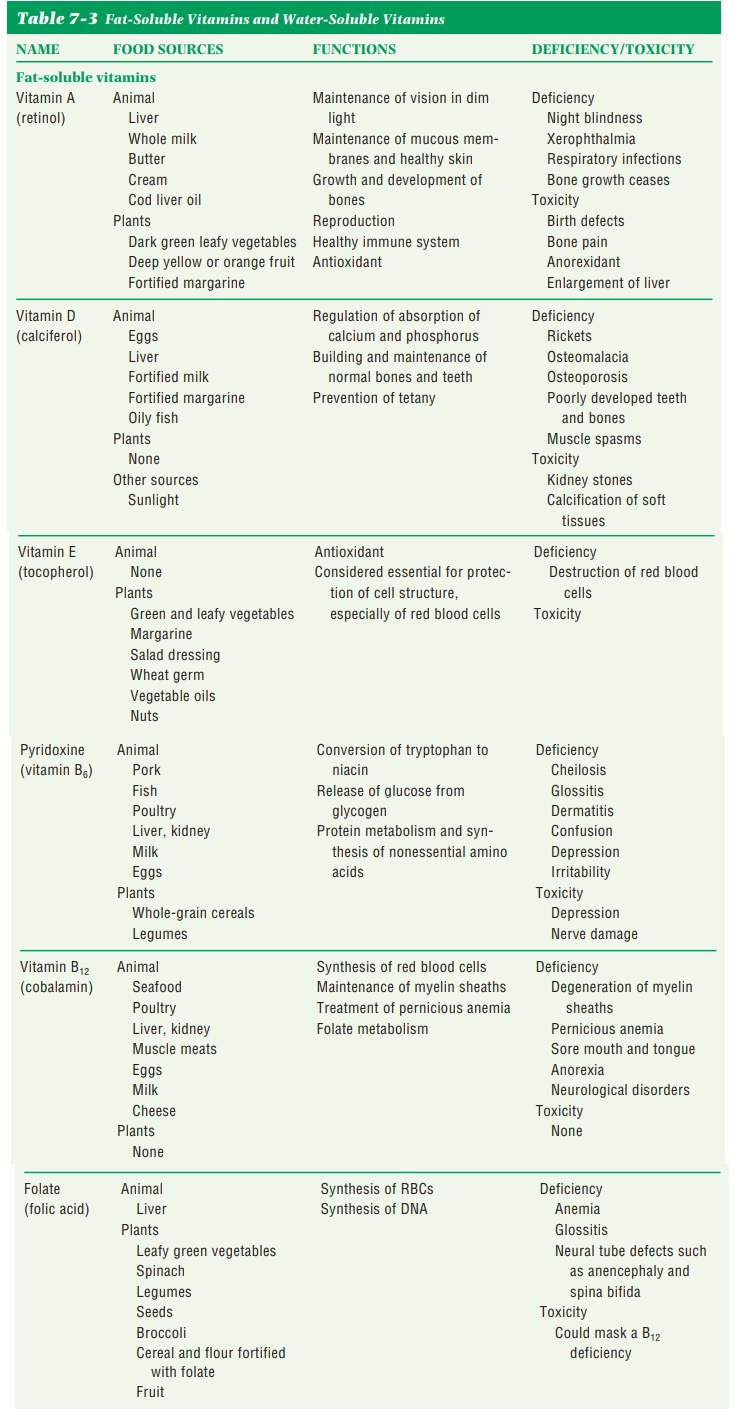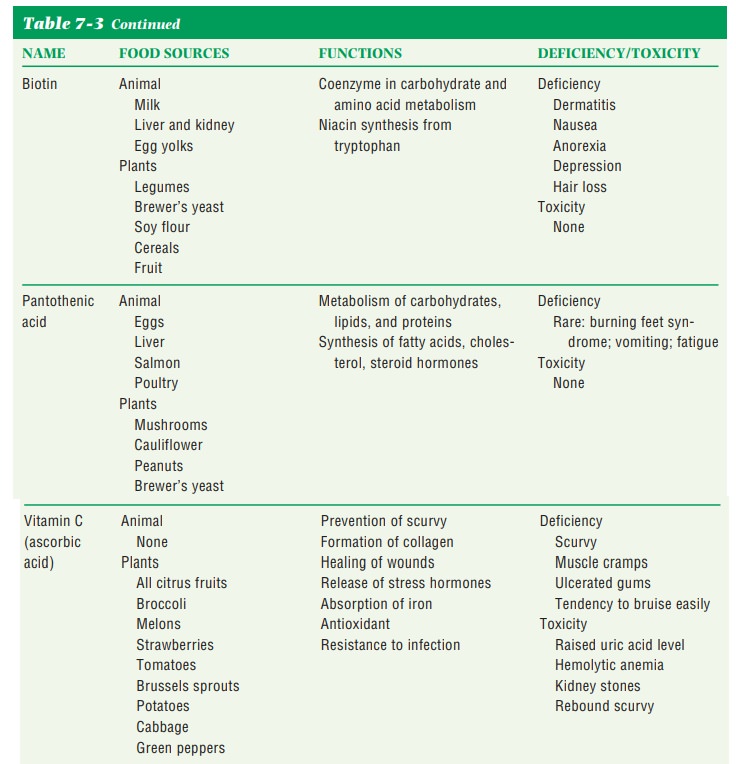Chapter: Nutrition and Diet Therapy: Vitamins
Classification of Vitamins
CLASSIFICATION
Vitamins are commonly
grouped according to solubility. A, D, E, and K are fat-soluble,
and B complex and C are
water-soluble (Table 7-3). In addi-tion, vitamin D is sometimes classified as
a hormone, and the B-complex group may be classified as catalysts or coenzymes. When a vitamin has
different chemical forms but serves the same purpose in the body, these forms
are sometimes called vitamers. Vitamin E is an example. Sometimes a precursor, or provitamin, is found in foods.
This is a substance from which the body can synthesize (manufacture) a specific
vitamin. Carotenoids are examples of
precursors of vitamin A and are referred to as provitamin A.



Related Topics